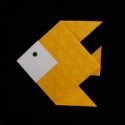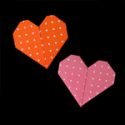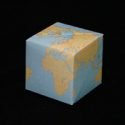Educational Benefits of Origami
Educational Benefits of Origami
Parents and teachers understand the educational benefits of origami and use paper folding as a tool to teach math, arts and social studies.
Origami and Math
If you have a square piece of paper, how many ways can you fold it to make 2 sections of the same size? A square folds in half to make 2 rectangles. A square folds in half to make 2 triangles too. Are the rectangles and triangles the same size? This type of question can help children understand the relationship between squares, rectangles and triangles.
What happens when you unfold an origami model? Can you see the symmetry in the crease patterns? Manipulating paper with their hands may help children learn concepts that may otherwise be rather abstract.
These studies show that Origami-Mathematics lessons increased spatial skills test scores, though the positive results were statistically insignificant compared to the control groups. It is generally agreed that origami serves as a good tool to teach math, though its absolute benefits is unclear due to the diverse backgrounds, skills and knowledge of the participants.
Books about Educational Benefits of Origami and Math
- Math in Motion Origami in the Classroom K-8 by Barbara Pearl
- Origami Math by Karen Baicker
- Unfolding Mathematics with Unit Origami by Betsy Franco
- Unfolding Mathematics with Origami Boxes by Arnold Tubis and Crystal Mills (book review)
- Project Origami: Activities for Exploring Mathematics by Thomas Hull
- Geometric Folding Algorithms Linkages Origami Polyhedra by Erik D. Demaine and Joseph O’Rourke
- Origami 3: Third International Meeting of Origami Science, Mathematics, and Education Sponsored by Origami USA by Thomas Hull
- Origami 4: Fourth International Meeting of Origami Science, Mathematics, and Education Sponsored by Origami USA and California Institute of Technology, edited by R Lang, AK Peters, Natick, MA
- see books in: amazon
Origami and Arts
One of the amazing things about origami is that you can take a flat piece of paper and turn it into a three dimensional object. This type of manipulation helps children understand spatial reasoning. You can encourage the child to see the model develop as you progress in the folding sequences. When a child works with play doh or clay, can he see the sculpture before it is finished? Can he see an origami model before it is finished? John Smith’s web site has an extensive discussion on Art, Origami, and Education.
Origami and Social Studies
By teaching origami you are expanding a child’s view of the world. Origami teaches children about Asian culture and traditions. Children may become more tolerant of other cultures if they are exposed to the joys that another culture offers.
Origami and Sadako’s Story opens up a whole array of social studies. What are the consequences of war? What have we learned from the atomic bomb? How can folding origami cranes send a peace message to the world? For more information about Sadako books and lesson plans, go to Sadako’s Story.
Distinguished origami artists Paul Jackson, Miri Golan, and Abeer Mughrabi bring together Israeli and Palestinian children in the Folding Together Project. It is hoped that the simple act of folding paper can foster mutual respect and understanding between these distinct cultures.
More Information
Origami also affects behavioral skills, cooperative learning, cognitive development, self esteem & empowerment. See below for more information.
- Math in Motion Educator’s Handouts by Barabra Pearl
- Why is origami good for you by Emma Craib
- Benefits by Rachel Katz
- Bibliography of Origami in Education and Therapy by John Smith




















